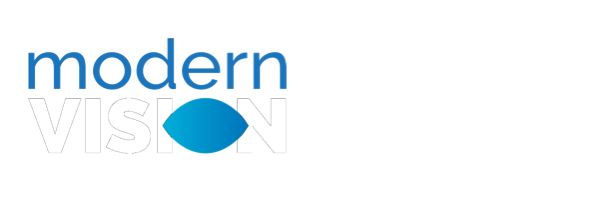Read Answers to Over 20 Common Questions About ReLex SMILE Eye Surgery
At Kugler Vision in Omaha, Nebraska, we are passionate about improving the quality of life for our patients. We specialize in today’s most advanced vision correction procedures to provide crisp, clear vision at all distances: far, intermediate, and near. In order to provide you with your best possible vision, it is important to visit our nationally-acclaimed team for an EyeAnalysisTM consultation. Your visual systems will be thoroughly tested and the results analyzed so that our expert surgeons can determine which type of vision correction is best for your eyes.
But what happens if the procedure that is recommended for you is not what you were expecting? Do not worry if you are recommended SMILE eye surgery and are not familiar with it. Our team is knowledgeable and patient. We understand you may have SMILE questions, and we are here for you! If you are researching SMILE eye surgery, check out the most frequently asked questions about ReLex SMILE we hear from our patients. Then, either schedule your Kugler Vision consultation online, or call us at 402-558-2211.
Frequently Asked Questions About SMILE Eye Surgery
The most popular questions we hear from our patients about the ReLex SMILE vision correction procedure are below. Hear what other patients are asking about SMILE and find answers to your SMILE questions.
To find out if SMILE eye surgery is right for you, it will be necessary to have a thorough vision correction consultation, like the EyeAnalysisTM consultation at Kugler Vision. If you have been told in the past you were not a candidate for vision correction, like LASIK, it is important to get a second opinion. Many patients we see at Kugler Vision that have been told previously that they cannot have their vision corrected actually are good candidates for a laser vision correction procedure. That is why it is important to see a vision correction provider who specializes in all current vision correction techniques, like SMILE vision correction.
At Kugler Vision, our expert vision correction team specializes in all seven forms of modern laser vision correction. That means that we perform frequently perform SMILE, for those patients who are recommended it as their best vision correction option. We understand that the decision to have a life-changing procedure like SMILE is a big one, and it is natural to have some feelings of anxiety. Rest assured that our surgeon, Lance Kugler, MD is a SMILE eye surgery expert and will talk you through every step of the way of your SMILE procedure and healing so that you can feel calm and confident in your decision to have SMILE.
The SMILE procedure is incredibly fast, and virtually painless. SMILE patients are in and out of the Vision Correction Suite (laser room) in about 10-15 minutes, and the laser is only active for approximately 30 seconds of that time. The one phrase we hear from our patients most often directly after their SMILE vision correction is “That’s it? That was fast!”.
SMILE is an excellent vision correction option for many people. The ReLex SMILE procedure has been proven to be safe and effective. SMILE delivers very similar results to LASIK and has consistently high satisfaction rates. However, it is important to note that there are seven vision correction procedures available. To find out if SMILE is the right procedure for your eyes, it is vital to consult our experts by scheduling an EyeAnalysis consultation.
No! The SMILE procedure is not painful. Before your SMILE procedure begins, your eye will be numbed with anesthetic drops. You may feel a slight sensation of pressure, but your Kugler Vision surgeon will talk you through each step of the way, and actual pain during the SMILE procedure is rare. After SMILE, your eyes may feel dry or uncomfortable, but this will subside as your eyes heal. Be sure to follow your post-operative instructions and take your drops on schedule to keep your eyes comfortable. Read on to our next FAQ below for more information on SMILE recovery.
The healing process after SMILE vision correction is typically fast and fairly comfortable for most people. The small keyhole incision where the lenticule (tiny disc shaped tissue) heals within 24 hours. It can be normal to experience slight dryness or a feeling of tired eyes on the day of the procedure. The eyes are kept comfortable post-procedure by a surgeon-guided regimen of medicated drops and artificial tears.
Most SMILE patients resume normal activities the following day– like driving, going to work, and moderate exercise. We recommend that SMILE patients wait to wear makeup or go swimming for one week after their procedure.
We hear from many patients wondering “How soon after SMILE will I have my best vision?” Most patients report that they can see well the next day, and return to driving and work comfortably. It may take a few weeks for vision to fully stabilize (reach full visual results) after SMILE vision correction surgery– this is a natural part of the healing process.
Yes! It is possible to have the SMILE procedure on both eyes in one session. We typically correct vision in both of a patient’s eyes in one SMILE procedure.
The results of the SMILE vision correction procedure do not wear off– as the tissue of the eye has been modified and this change is permanent. There is a common myth that vision correction like LASIK or SMILE wears off over time. This is because all of us, whether we have had vision correction or not, experience visual changes later in life– after age 43 or so. These mid-life vision changes stem from the aging process of the eye’s lens– a different part of the eye unrelated to the area that was modified during SMILE. For more on mid-life vision changes and treatments to correct them, click here: Near Vision FAQs.
The results of SMILE are permanent. However, over time all people will experience changes in their near vision, whether or not they have had the SMILE procedure. These changes are an effect of the aging process on the crystalline lens– found in the interior of the eye. These near vision changes are treatable and can be corrected. To learn more about near vision changes, read our Near Vision FAQs.
Most people can resume driving the day after their SMILE procedure. Many of our SMILE patients drive themselves to their 24 hour post-operative appointments!
Most people can return to work the day after their SMILE surgery. SMILE recovery is not a barrier to returning to work within 24 hours for the majority of patients. However, if you have special concerns related to your particular profession, be sure to bring it up with your surgeon so they can calm your fears and ensure you feel confident and assured in your post-SMILE plan.
No, LASIK and SMILE are not the same thing. SMILE vision correction provides the same crisp, clear visual results as LASIK does– but these results are achieved using different technology and processes. Some similarities of LASIK and SMILE are:
- Both SMILE and LASIK have fast, comfortable recovery processes.
- Both SMILE and LASIK treat vision problems like nearsightedness, farsightedness, and and astigmatism.
- Both SMILE and LASIK help patients to see clearly without glasses or contacts.
SMILE and LASIK both yield crisp, clear vision– however the process and technology used in these procedures are different. In LASIK, a tiny flap in the cornea, or outer layer of the eye, is created and a small amount of tissue is removed using an excimer laser. In SMILE vision correction, a very small keyhole incision is made, and a small, disc-shaped piece of tissue (called a lenticule) is removed. Both SMILE and LASIK correct vision by changing the surface of the eye to make light entering the eye focus clearly on the retina. For more on how eyes work, read our common vision conditions page.
All people begin to notice changes in their near vision over time– generally beginning in their mid forties. This has nothing to do with the person’s previous SMILE eye surgery. These changes are a result of the natural aging process of the eye’s crystalline lens– found in the interior of the eye. These near vision changes occur to everyone, whether or not they have had a vision correction procedure in the past. The great news is that we specialize in treatments for near vision changes– and reliance on reading glasses can be avoided. If you are experiencing near vision changes, whether or not you have had a procedure previously, we encourage you to contact our near vision experts for a private EyeAnalysis consultation.
Contact lens intolerance (CLI) does not disqualify a patient from having SMILE vision correction, but when considering laser eye surgery it is important to have a consultation to find out which procedure is right for your eyes. We see many people who are suffering from Contact Lens Intolerance (CLI)– a painful condition affecting long-term contact lens wearers. The eyes of people with CLI begin to recognize contact lenses as a foreign body, and reject the lenses. People with CLI must either resort to glasses, or correct their vision with a long-lasting solution like SMILE, LASIK, or one of our other procedures.
Military members are generally able to have the SMILE vision correction procedure. However, if you are in the military we encourage you to speak directly with your commanding officer.
Yes, it is safe to fly after SMILE surgery. We ask that you attend your 24 hour post-operative appointment before flying though, so that we may check your progress and healing. Some travelers find that the dry, recirculated air found in planes makes their eyes feel dry or uncomfortable. For this reason it is highly recommended that you bring your lubricating drops with you on your travels.
We ask that you wait one week after ReLex SMILE vision correction to go swimming. Following these guidelines is recommended to reduce risk of any water-borne infection or complication post-procedure.
UV rays are harmful to everyone’s eyes, regardless of whether the person has had a vision correction procedure. If you use tanning beds, please be sure to use eye protection each and every time. Eyes are especially susceptible to UV rays directly after a procedure. For these reasons we recommend waiting 2-3 weeks after SMILE vision correction, or any laser eye procedure, to go tanning. After this 2-3 week period, you will be able to use the eye-protection goggles commonly used in tanning beds.
Yes. SMILE eye surgery has been proven to be a safe and effective method of vision correction to reduce or eliminate the need for glasses and contact lenses. Over 7 million people worldwide have opted to correct their vision with SMILE eye surgery. SMILE vision correction is not invasive, the least disruptive to the surface of the eye of any vision correction method, and has a high patient satisfaction rate. The ReLex SMILE vision correction procedure has received United States FDA approval for safety and effectiveness.
You should never rub your eyes. Rubbing your eyes can have harmful side effects– especially directly after a laser vision correction procedure. While you may have the urge to rub your eyes if they feel dry, this would not bring relief and may actually hurt. If you experience itchy or dry eyes use your recommended lubricating drops. At Kugler Vision, we provide our patients with comfortable safety glasses post-procedure. Sleeping in these for the first few nights after your procedure will protect your eyes and help ensure that you do not rub or scratch them as you sleep. For more on why you should always avoid rubbing your eyes read our blog post about it here.
SMILE eye surgery is a procedure that uses state-of-the-art, life-changing technology. It may surprise you to find that SMILE is not new! SMILE vision correction surgery was approved for use in the United States by the FDA in 2016. However, refractive surgeons in Europe have been performing SMILE vision correction for over 10 years! Over 7 million SMILE procedures had been performed worldwide. The number is now much higher.




